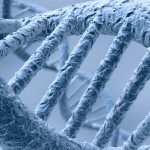Lien vers Pubmed [PMID] – 23435978
J. Bacteriol. 2013 May;195(9):1979-90
Integrative and conjugative elements (ICEs) have a major impact on gene flow and genome dynamics in bacteria. The ICEs TnGBS1 and TnGBS2, first identified in Streptococcus agalactiae, use a DDE transposase, unlike most characterized ICEs, which depend on a phage-like integrase for their mobility. Here we identified 56 additional TnGBS-related ICEs by systematic genome analysis. Interestingly, all except one are inserted in streptococcal genomes. Sequence comparison of the proteins conserved among these ICEs defined two subtypes related to TnGBS1 or TnGBS2. We showed that both types encode different conjugation modules: a type IV secretion system, a VirD4 coupling protein, and a relaxase and its cognate oriT site, shared with distinct lineages of conjugative elements of Firmicutes. Phylogenetic analysis suggested that TnGBSs evolved from two conjugative elements of different origins by the successive recruitment of a transposition module derived from insertion sequences (ISs). Furthermore, TnGBSs share replication modules with different plasmids. Mutational analyses and conjugation experiments showed that TnGBS1 and TnGBS2 combine replication and transposition upstream promoters for their transfer and stabilization. Despite an evolutionarily successful horizontal dissemination within the genus Streptococcus, these ICEs have a restricted host range. However, we reveal that for TnGBS1 and TnGBS2, this host restriction is not due to a transfer incompatibility linked to the conjugation machineries but most likely to their ability for transient maintenance through replication after their transfer.


